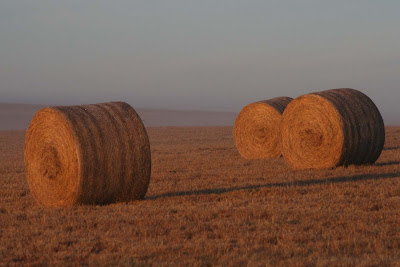So I also wish to acknowledge the Ngarrindjeri as the very best of my teachers. And I'd like to share with you some views of Ngarrindjeri Country on the Narrung Peninsula that you can't see from the highway.

Narrung comes from the Ngarrindjeri Narrarrung, place of tall she-oak forest

where an echidna strolls by unhindered ...

where kangaroos bound,

where turtles do their thing,

where butterflies mate...

where dunes spring to life with autumn rains ...


where ants create a symmetry of architecture...

where raindrops linger on she-oak Allocasuarina fingers,

where showers awaken a soft carpet of moss on limestone ,

where the heath Epicaris impressa and

Correa bring colour to the woodland,

where Hibbertia brightens a winter's day,

and its petals become a delectable item on the ant menu ...




where wet weather sponsors the wonderful world of fungi and lichen,

Bracket fungus Stereum illudens?


where sundews open delicate chalices: Drosera whitttakeri?

Drosera glanduligara?

and Drosera auriculata?


where Variable grounsel, Senecio lautus heralds the spring,

along with flames of Kennedia prostrata,

pigface Carpobrotus rossii,

yellow star flowers, Hypoxis vaginata?


cream swathes of old man's beard, Clematis microphylla,

native spinach, Tetragonia implexicoma,

Billardiera cymosa,


twining fringe lily, Thysanotus patersonii,

Vittidinia,

everlasting daisies of the Helichrysum species,

mat-rush, Lomandra leucocephala,

pink-eyed susan, Tetrathecea pilosa,

blue fairies, Caladenia deformis


pink fairies,

spider orchids of the Caladenia species,

orchids, possibly Lyperanthus nigricans,

orchids of the Thelymitra species



greenhoods of the Pterostylis species,

blue-bells of the Wahlanbergia species,

and early nancies, Wurmbea dioica

where Acacia longifolia var longifolia makes the air sweet as honey,

along with Australia's floral emblem Acacia pycnantha,

where the roots of the yam daisy Microseris lanceolata were once a staple food,

where Dianella brings healing,

where the sour-sob is not an introduced species but a local Oxalis perennans,

where mallee of the Eucalyptus species bursts with sprays of white,

where fiery harlequin mistletoe Lysiana exocarpi hangs,

where blossoms of Banksia marginata provide pollen for bees,

where summer brings the spicy fruit of munthari Kunzea pomifera,

and the sweet apple-berries of Billardiera cymosa,

where Calystegia sepium looks cool in the heat,

where a handful of emu-bush Eremophila survives,

along with and elegant Lobelia species,

where paperbark of the Melaleuca species aids Ngarrindjeri religious practice,

where reeds Phragmites australis provide shelter and food,

where yellow flowers such as Cotula australis have traditionally warned the Ngarrindjeri women when the waters aren't safe to swim,

and where cape barren geese are welcomed by the Ngarrindjeri as ngartji, friend and relative, and not as pests.

The plunder of Ngarrindjeri Country began early last century. The estuary/delta area of the river and lakes had supported the densest population in Australia, pre-British Invasion. By 1860, a South Australian Select Parliamentary Committee inquired into the widespread starvation of First Peoples due to land clearances, fencing and lack of access to traditional food gathering grounds.

One side of the road shows traditional Ngarrindjeri land management methods,

while the other side shows Australian methods.


Cattle wade into the water supply of Lake Alexandrina in contravention of the 2003 SA Water Quality Act.

So today the soil is degraded, poisoned with salt,

and toxic, soil-bacteria-destroying chemicals are used to control introduced species like the African boxthorn Lycium feroccissimum,

onion weed, Asphodelus fistulosus,

scotch thistle

and burr-medic of the Medicago species.

And species introduced as crops like lupins run feral,

or like the stork's bill Erodium species

are easily confused with native species like Thomasia petalocalyx.

Inappropriate behaviours persist in the Ramsar wetland area, such as the annual duck-shooting season which leaves a gruesome mess at Narrung Reserve,


and fouls the water supply.

The she-oaks, despite Native Vegetation protection legislation, are still felled for firewood.

Succulent samphires Sarcocornia species are eradicated as weeds,

and the Narrung wetlands have been treated like a dump.

The lack of waters flows have revealed some rare and unusual inhabitants along the lake-shore,

and pink swamp-heath, Sprengelia incarnata?

and creeping monkey-flower Mimulus repens.

But the lowered water-level has exposed Ngarrindjeri sacred objects, kitchens and burial sites,


where white-fellas' shoes were discarded in favour of a lighter footprint.

Recently Ngarrindjeri elder Matt Rigney spoke of his frustration that First Peoples are often an afterthought in decision-making across this continent. "Central to our way of being in the world, is our understanding that it is our Country, our Mother, the Earth who sustains us. "

As Ngarrrindjeri elder Veronica Brodie wrote:
"we were all taught to love, not hate." [My Side of the Bridge, p159]
And the words of her sister, Leila D Rankine, give another Ngarrindjeri perspective:
"Oh spirit of the long ago
and guardian of the past
as I stand beside your waters,
my soul knows peace at last."

I am a vast body of water that nestles into the living landscape of Swan.

Here the white spray of my wing feathers ruffling, here my long neck-Kurangk.

Once my waters were white with pelican, egret, spoonbill, avocet, tern;

Black with swan, duck, darter, cormorant,

Golden with pollen from tea-tree, she-oak, acacia and eucalypt,
Red with the seasonal silts washing down from the source, our Mother.

Now I am green with greed

and grey with the pangs of death,

Oh my children, who can hear my cries?

Who can sweeten my tears?
Please let the Waters of the River Murray flow, so that we can all share its Life.
images © Vesper Tjukonai May 2008
